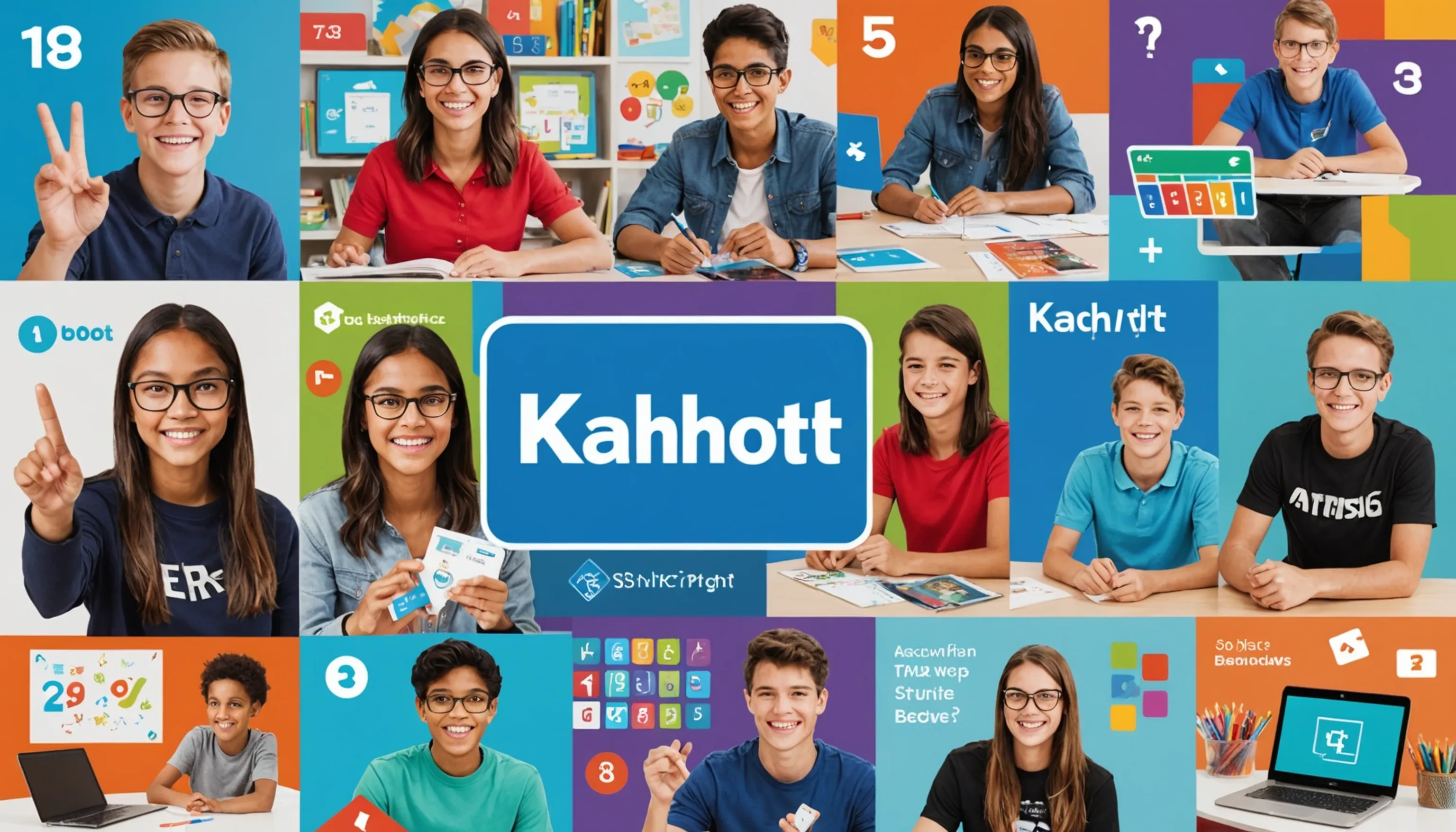Top Educational Math Games for Teenagers
 HvWHenry van Wagenberg
HvWHenry van Wagenberg
Top Educational Math Games for Teenagers
When it comes to engaging teenagers in math, educational math games can make a significant difference. These games not only enhance understanding but also make learning enjoyable. Here are some top educational math games for teenagers:
- Kahoot! - This interactive quiz platform allows teachers to create fun quizzes that test math knowledge in a competitive setting.
- Prodigy Math - An immersive game that tailors math problems to students' skill levels, making it both challenging and fun.
- Mathletics - This online platform offers a comprehensive range of math activities and challenges designed to improve skills.
Integrating these games into the curriculum can foster a love for math among teens.
Benefits of Educational Math Games
Educational math games offer numerous benefits that can significantly enhance the learning experience for teenagers. Here are some key advantages:
- Engagement: Math games capture students' attention and keep them motivated. By turning learning into a fun and interactive experience, students are more likely to participate actively and stay focused.
- Improved Retention: When students engage in games, they tend to remember concepts better. The combination of play and learning helps reinforce mathematical principles, making them easier to recall during exams or practical applications.
- Development of Critical Thinking: Many educational math games require strategic thinking and problem-solving skills. As teens navigate challenges, they develop their ability to think critically and approach problems from different angles.
- Collaboration: Multiplayer math games encourage teamwork and collaboration among peers. This social interaction not only makes learning enjoyable but also enhances communication skills and fosters a supportive learning environment.
- Adaptability: Educational math games often adapt to the player's skill level, allowing for personalized learning. This ensures that each student can progress at their own pace, which is especially beneficial for those who may struggle with traditional teaching methods.
Ultimately, integrating educational math games into the classroom can lead to a more dynamic and effective learning experience, helping teenagers build a strong foundation in mathematics.
Types of Educational Math Games
Educational math games come in various formats, catering to different learning styles and preferences. Here are some popular types of educational math games that can effectively engage teenagers:
- Online Math Games: These interactive games can be played on computers or tablets, providing a dynamic way to learn math concepts. Websites like Prodigy Math and Mathletics offer a range of activities that adapt to students' skill levels, ensuring personalized learning experiences.
- Board Games: Traditional board games like Sum Swamp or Math Dice encourage face-to-face interaction while practicing math skills. These games are excellent for small groups and can be easily integrated into classroom activities.
- Card Games: Simple card games like 24 Game or Math War challenge students to use arithmetic operations to achieve specific goals. These games promote quick thinking and fluency in math.
- Mobile Apps: There are numerous educational math apps available for smartphones, such as DragonBox and Brilliant. These apps offer engaging puzzles and challenges that make learning math fun and accessible anywhere.
- Quiz-Based Games: Platforms like Kahoot! allow teachers to create interactive quizzes that can be played in real-time. This type of game fosters competition and encourages students to engage with math concepts actively.
By incorporating various types of educational math games, teachers can create a comprehensive and enjoyable learning experience for teenagers.

Popular Educational Math Games for Teens
Here are some popular educational math games that teenagers enjoy:
- Kahoot! - An interactive quiz platform that makes learning math fun through competition.
- Prodigy Math - A role-playing game that tailors math challenges to individual skill levels.
- Mathletics - Offers a wide range of math activities and challenges to improve skills.
- DragonBox - A series of apps that teach algebraic concepts through engaging puzzles.
- Sumdog - Combines math practice with games, allowing students to compete with peers.
Kahoot!
Kahoot! is a highly engaging and interactive learning platform that has gained immense popularity in classrooms worldwide. It allows teachers to create quizzes, surveys, and discussions that students can participate in using their devices. This game-based learning tool is particularly effective in teaching math concepts to teenagers, making it an essential resource for educators.
One of the standout features of Kahoot! is its ability to foster a competitive yet collaborative environment. Students can join games in real-time, answer questions on their devices, and see their scores displayed on a shared screen. This aspect of competition motivates students to participate actively and strive for improvement.
Using Kahoot! for math lessons can help reinforce concepts through repetition and immediate feedback. Teachers can create quizzes on various topics, from basic arithmetic to advanced algebra, catering to different skill levels. The platform also allows for multimedia integration, meaning teachers can include images and videos to make questions more engaging.
Moreover, Kahoot! encourages social interaction among peers, as students often work in teams to answer questions. This collaboration not only enhances their math skills but also promotes teamwork and communication skills. With its user-friendly interface and adaptability, Kahoot! has become a go-to tool for educators looking to make math learning fun and effective for teenagers.
Prodigy Math
Prodigy Math is an engaging, game-based learning platform designed to help students in grades 1 through 8 develop their math skills. This interactive role-playing game allows teenagers to embark on adventures while solving math problems tailored to their individual skill levels. Prodigy Math combines education with gaming, making it an attractive option for both students and teachers.
One of the key features of Prodigy Math is its adaptive learning technology. As students progress through the game, it assesses their understanding and adjusts the difficulty of math questions accordingly. This personalized approach ensures that each student is challenged at their own level, allowing them to build confidence as they master new concepts.
The game covers a wide range of topics, including arithmetic, geometry, fractions, and algebra, aligning with common core standards. Prodigy Math also incorporates engaging storylines and characters, making learning enjoyable and motivating for teenagers. Students can earn rewards, customize their avatars, and explore various worlds, which keeps them invested in their learning journey.
Additionally, teachers can track student progress through detailed reports, identifying areas where students may need extra help. Prodigy Math not only enhances math skills but also fosters a love for learning, making it an invaluable resource for educators looking to improve student outcomes in mathematics.

Mathletics
Mathletics is a comprehensive online learning platform designed to help students improve their math skills through interactive activities and engaging resources. Aimed at students of all ages, including teenagers, Mathletics combines fun with learning to create an effective educational experience. This platform offers a wide variety of math topics, from basic arithmetic to advanced calculus, ensuring that students can find resources that suit their specific needs.
One of the standout features of Mathletics is its gamified approach to learning. Students can earn points and rewards by completing exercises and participating in challenges, which motivates them to engage with the material consistently. The platform also includes live math competitions, allowing students to compete against peers from around the world, fostering a sense of community and collaboration.
Mathletics provides personalized learning pathways, adapting to each student's skill level and learning pace. This adaptability ensures that students are neither bored with overly simple tasks nor overwhelmed with difficult concepts. Additionally, the platform offers instant feedback, helping students understand their mistakes and learn from them in real-time.
Teachers can access valuable insights through detailed reporting features, which track student progress and performance. This data allows educators to identify areas where students may need additional support and tailor their instruction accordingly. Overall, Mathletics is an invaluable tool for both students and teachers, promoting effective math learning in an engaging and interactive environment.
How to Integrate Math Games into Learning
Integrating math games into learning can enhance students' engagement and understanding. Here are some effective strategies:
- Set Clear Objectives: Define what you want students to learn through the games. Align the games with specific math concepts or skills.
- Choose Appropriate Games: Select games that cater to the skill levels and interests of your students. Consider online platforms like Kahoot! or Prodigy Math.
- Incorporate Regularly: Schedule regular game sessions during math lessons to reinforce concepts and keep students excited about learning.
- Encourage Collaboration: Use multiplayer games to promote teamwork. This fosters communication and problem-solving skills among students.
- Assess Progress: Use assessments and observations to gauge how well students are mastering concepts through gameplay.
By thoughtfully integrating math games, educators can create a dynamic learning environment that motivates students to excel in mathematics.
Creating a Fun Learning Environment
Creating a fun learning environment is essential for engaging students, particularly when it comes to subjects like math. A positive atmosphere can significantly enhance motivation and retention. Here are some strategies for fostering a fun and effective learning environment:
- Incorporate Interactive Activities: Use hands-on activities and games that promote active participation. For instance, math-related puzzles or group challenges can make learning enjoyable and dynamic.
- Utilize Technology: Leverage educational platforms such as Kahoot! or Prodigy Math to integrate technology into lessons. These tools provide a modern, interactive approach that can captivate students' attention.
- Encourage Collaboration: Foster a sense of community by promoting teamwork. Group projects and cooperative learning activities help build relationships among students, making them feel more comfortable in sharing ideas.
- Celebrate Achievements: Recognize and celebrate student achievements, no matter how small. This can be through verbal praise, rewards, or displaying their work. Celebrating success boosts confidence and encourages further participation.
- Maintain a Positive Attitude: Your enthusiasm as an educator can greatly influence the classroom atmosphere. Show passion for teaching and remain approachable, which helps students feel more comfortable to express themselves.
By implementing these strategies, educators can create a fun learning environment that encourages students to thrive and develop a love for mathematics.
Setting Goals and Rewards
Setting goals and rewards is a powerful strategy to motivate students and enhance their learning experience, especially in subjects like math. By establishing clear objectives and providing incentives, educators can foster a sense of achievement and encourage persistence. Here are some effective approaches:
- Define Clear Goals: Work with students to set specific, measurable, achievable, relevant, and time-bound (SMART) goals. For instance, a student might aim to improve their math test score by a certain percentage within a month.
- Break Down Larger Goals: Large objectives can be overwhelming. Break them into smaller, manageable tasks. For example, mastering multiplication tables can be divided into learning one set each week.
- Implement a Reward System: Recognize and reward students for achieving their goals. Rewards can be tangible, like small prizes or privileges, or intangible, such as verbal praise or extra recess time.
- Create a Classroom Leaderboard: A friendly competition can motivate students to reach their goals. Display progress on a classroom leaderboard to encourage students to strive for improvement.
- Encourage Self-Reflection: After reaching goals, have students reflect on their progress. This practice helps them recognize their achievements and sets the stage for future goals.
By integrating goal setting and rewards into the learning process, educators can create a motivating environment that encourages students to take ownership of their learning and strive for excellence in math.
